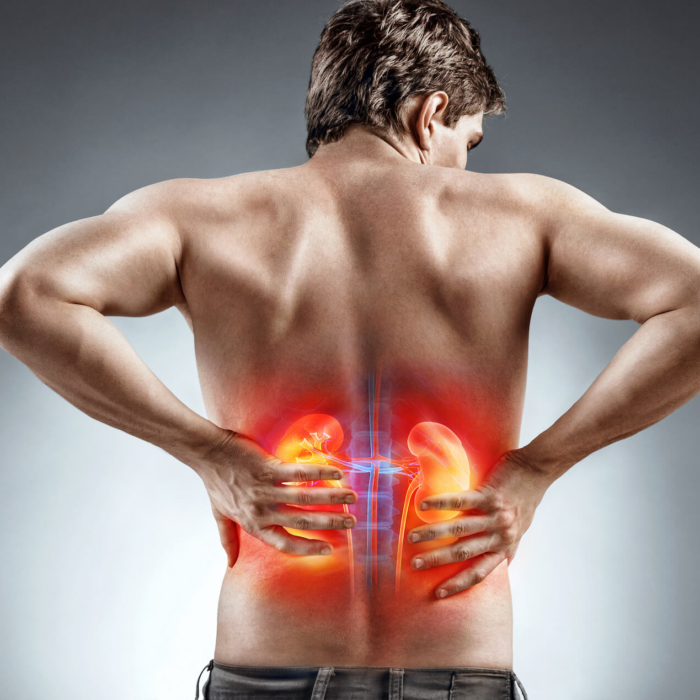
Almost half of the population without symptoms has kidney stones. They are often dormant and do not cause any major problems for a long time. If a stone is too large to pass out of the body naturally, it can block normal urination and suddenly cause severe pain and kidney cramps. Other symptoms may include bloody urine or burning pain when passing urine, infection and nausea.
Permanent improvement can only be expected with removal of the kidney stone. Many people only see their doctor when they have severe cramps, possibly fever, and problems passing urine. Regular medical check-ups can prevent kidney stone problems with severe pain and possibly more serious complications. 30% of stones require active treatment and stone removal.

Kidney cancer can be easily diagnosed with a simple ultrasound scan or X-ray.
Open surgery: the disadvantage is that it cannot be repeated indefinitely and requires hospitalisation under anaesthesia.
Percutaneous endoscopic lithotomy: unlike open surgery, it has a shorter recovery time and few complications
Shock wave lithotripsy (ESWL): one of the most significant advances of the last decade.
It involves using externally generated, high-energy shock waves to break up kidney stone with continuous pulses. After nearly 20 minutes, the tiny stone fragments are evacuated through the renal tubes and then the urethra. The procedure is painless and does not require any anaesthesia.
The procedure is repeatable and does not damage the kidney.
ESWL treatment can be used in about 90% of people with kidney disease.
Benefits of ESWL treatment:
Eligibility for treatment is determined by the urology specialist who, after appropriate tests, sends the patient for ESWL.